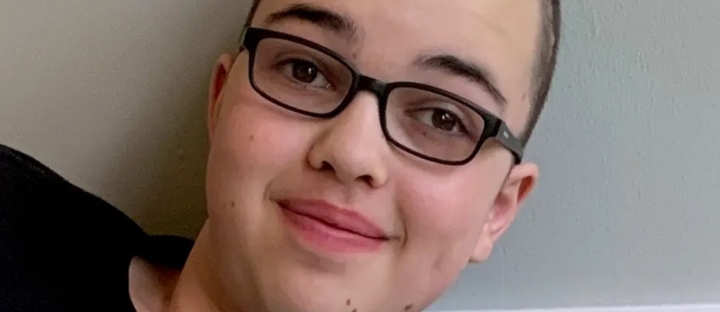
Austin’s Legacy
Austin described himself as a “decent, cool dude.” He was the funniest and wisest person I have ever known, and he only lived for 13 years, 10 months, and 17 days. Austin was born with five brown birthmarks that, at the time, though extremely rare, seemed to be only a minor cosmetic issue. In the weeks following his birth, we discovered that Austin had a genetic condition called neurocutaneous melanocytosis, which causes overdevelopment of the pigment melanin in the body. This condition resulted in the birthmarks on his skin and melanin deposits in his brain.
We learned of this when Austin’s one-month-old head began to swell, and he needed surgery to place a shunt in his brain to drain the fluid properly. This condition is very rare, and when it escalates to causing brain issues, it becomes an even rarer cancer called leptomeningeal melanoma, which has no cure or successful treatment. The doctors were certain he would live only a few months, yet Austin continued to grow and thrive. It took him a little longer than most, but he learned to walk and talk, soon cracking everyone up with his hilarious personality. His jokes were always accompanied by the best facial expressions, and sometimes only the adults really understood them.
By the time he was done, Austin had undergone 10 brain surgeries and suffered from seizures and debilitating headaches for several years. Living this way was certainly not what he would have wished for, but it gave him a maturity beyond his years and an understanding of things that many adults couldn’t even grasp. While it’s sad to think about him being in pain so often, that’s not what comes to mind when I think of him.
I think of how much he loved his parents, his brothers, and his dogs. I think of how he could name all the players on the Cubs roster and their jersey numbers, act out scenes from Star Wars movies with his brother Liam, or rattle off the superpowers of any Marvel character in history. At the end of the day, when his mom came home from work, he would sit with her at the table to talk about his day and ask about hers.
He is so missed, and we love him so much. There is a big hole in our family now, but during the last minutes of his life, we told Austin he will always be a part of our family, and he always will be.





Our Donation Story
Several years ago, at a conference for the patient advocacy group representing people with large birthmarks and Austin’s rare genetic condition, we had the good fortune to meet Dr. Miguel Reyes-Mugica, the chief of Pediatric Pathology at Children’s Hospital of Pittsburgh. At the time, Dr. Reyes-Mugica was establishing the Gavin Bailey Tissue Repository to study Austin’s disease and other pediatric neural crest disorders. Austin was only seven years old then, but we were convinced that if the time ever came, we would donate tissue to this research in the hopes that someday there would be a cure.
When we made the very difficult decision to stop treatment on June 22, 2021, Austin was experiencing extreme memory loss and confusion in addition to severe mobility issues. We didn’t know if it would be possible to get him to the hospital for his infusion, much less how he would get around. He was sleeping next to us during the telehealth visit with his oncologist, Alicia Lenzen, when we informed her of our decision. When Austin woke up, I told him he would never have to go back to the hospital. He smiled and said, “Good.”
A few days later, Dr. Lenzen called me to ask about donation. I told her this is what we had always planned. In fact, when he had the tumor removed a year ago, a donation was made, and we wanted to make sure part of it went to Dr. Reyes-Mugica’s research. Dr. Lenzen said she had already begun the process because she knew how much it meant to us, and there were other research projects that would like to have Austin’s tissue as well. I agreed to this, even though I was crying, and the idea of it was both very scary and terribly sad. I can’t put into words how much that conversation broke me.
But in the end, I know there is nothing Austin wanted more than a cure for this disease. He always had hope, and so did we. I only wish it had come soon enough for Austin. I hope that someday we will be able to say that no more children will die from leptomeningeal melanoma or neurocutaneous melanocytosis.





